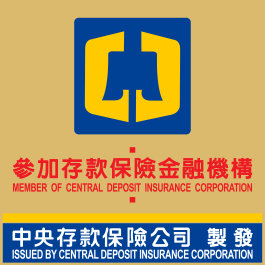
For the best experience, change the screen to portrait mode.
:::
Interest Rate Option
Product Characteristics
- It generally refers to options that use interest rate as the trading subject matter. Theoretically, the interest rate caps option refers to the call option, and the interest rate floors option refers to the put option. When the buyer of option pays the premium to the seller, the buyer than obtains the right for the option of “call option” or “put option.” At a certain period of maturity date in the future, when the market benchmark interest rate is higher than the performance interest rate, the buyer of the “call option” may request the seller of option to pay its interest difference. On the contrary, when the market benchmark interest rate is lower than the performance interest rate, the buyer of the “put option” may request the seller of the option to pay its interest difference.
Product Type
- Interest Rate Caps:
It refers to the rights of the buyer of the interest rate option to collect interest difference according to an interest rate between the performance interest rate and the benchmark interest rate on the price comparison date when the market benchmark interest rate is higher than the performance rate. - Interest Rate Floors:
It refers to the right for the buyer of the interest rate option to accept interest difference according to an interest rate between the performance interest rate and the benchmark interest rate on the price comparison date, when the market benchmark interest rate is lower than the performance rate. - Interest Rate Collars:
The buyer of such type of option combination purchase one Caps and sell one Floors at the same time in order to fixed the interest rate within a range, thereby creating a Collar. In other words, when the market benchmark interest rate increases to exceed the interest rate caps, the seller will have to pay the interest difference between the market benchmark interest rate and the interest rate caps to the buyer. When the market benchmark interest rate decreases to exceed the interest rate floors, the buyer will have to pay the interest difference between the market benchmark interest rate and the interest rate floors to the seller.
Use Timing
- Through the operation of interest rate options, it is able to assist the buyer that during the acquisition of options upon paying the premium, the interest rate can be fixed at a certain level, in order to prevent loss when the interest rate is unfavorable to the buyer.
.png)



